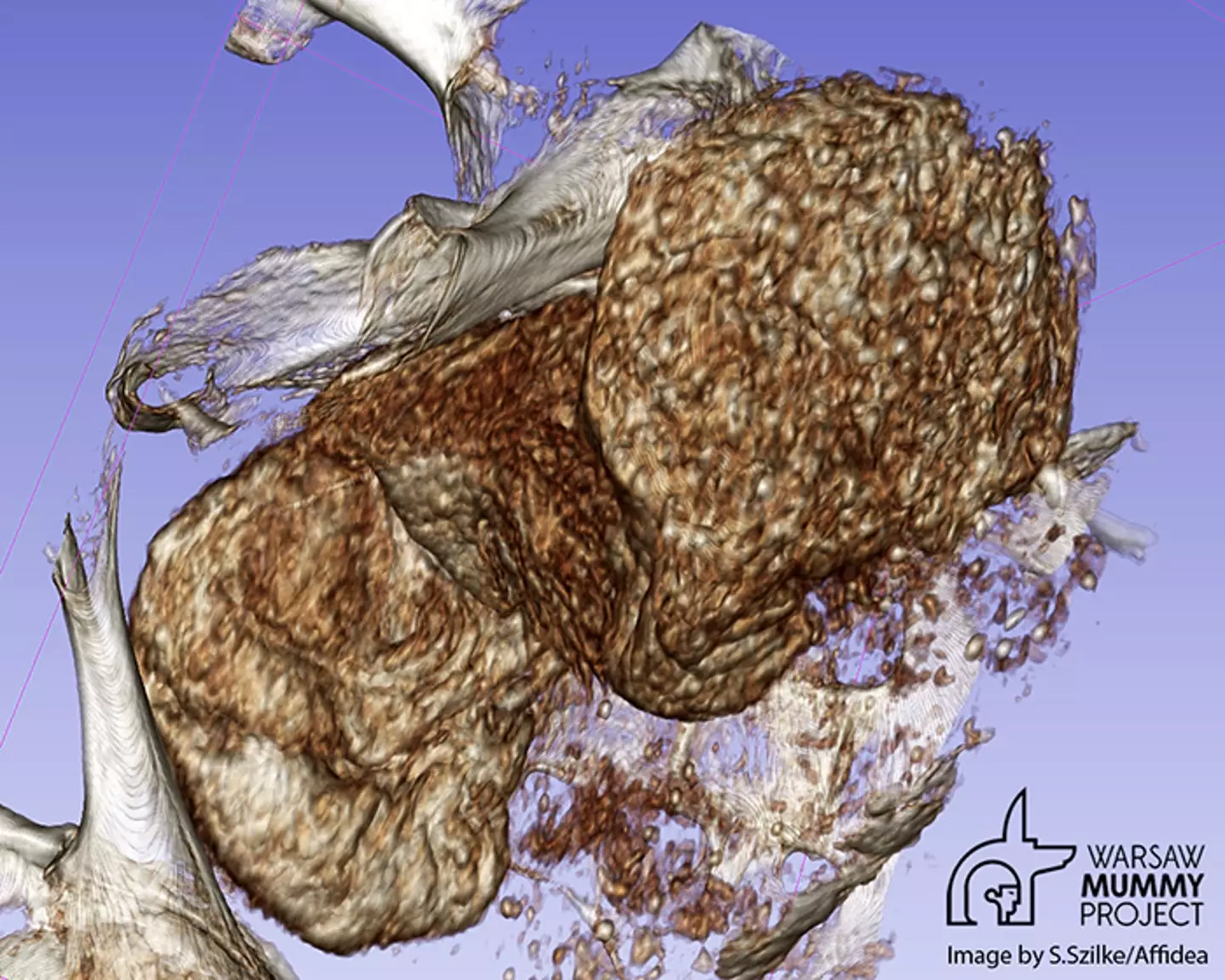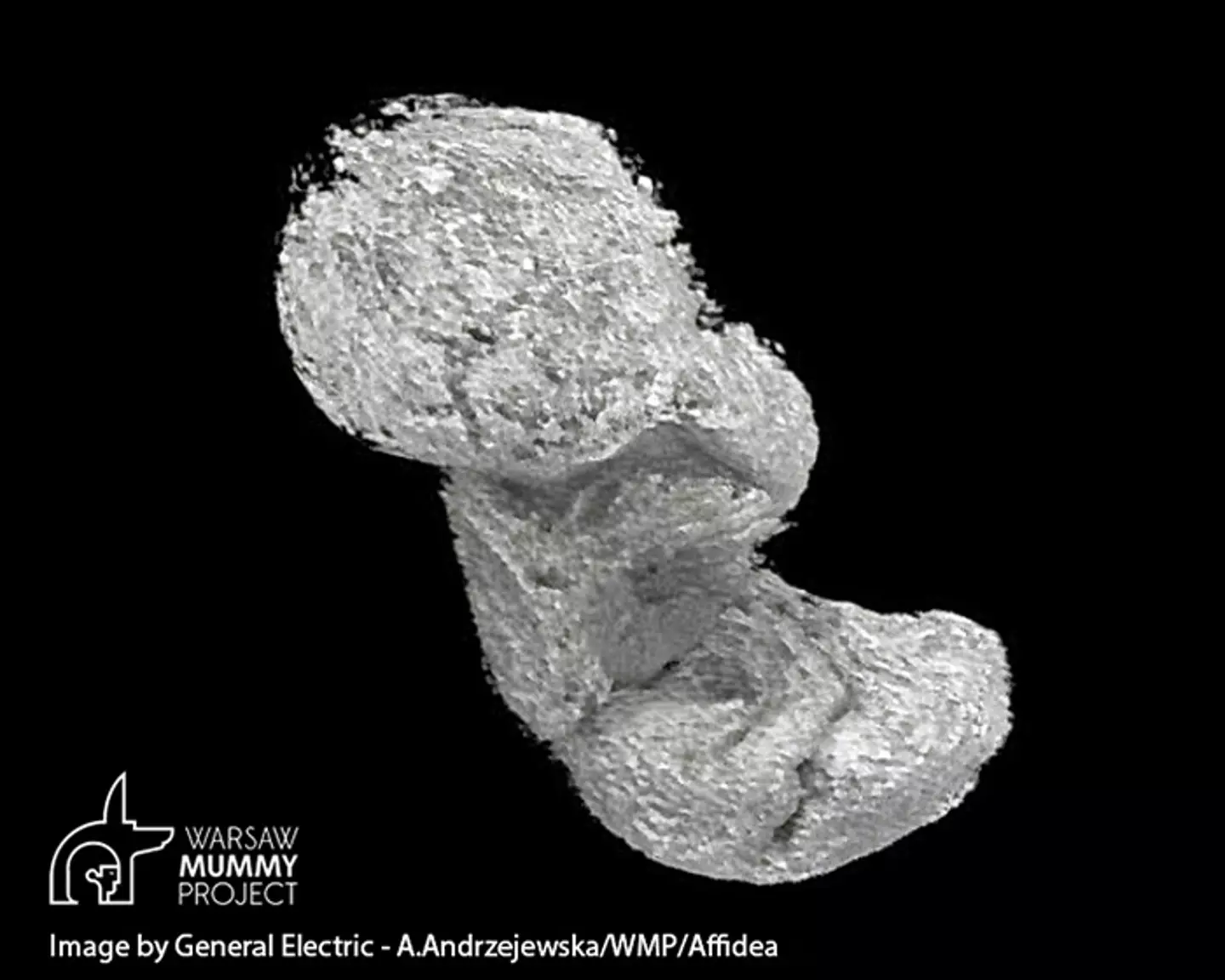_.jpg)
_.jpg)
A group of archaeologists have come across the first-ever Egyptian mummy to have been discovered with a foetus preserved inside of it.
The scientists, led by bio-archeologist Marzena Ożarek-Szilke from the University of Warsaw, and archaeologist Woljclech Ejsmond from the Polish Academy of Sciences, conducted the research as part of the Warsaw Mummy Project.
Advert
The team have since revealed the foetus was able to be preserved for over 2,000 years due to being 'pickled'.
The acidification of the women's body as it decomposed is what resulted in the foetus being able to be discovered after all this time, Science Alert reports.
A blog post for the research project states: 'The foetus remained in the untouched uterus and began to, let say, 'pickle'. It is not the most aesthetic comparison, but conveys the idea. Blood pH in corpses, including content of the uterus, falls significantly, becoming more acidic, concentrations of ammonia and formic acid increase with time. The placement and filling of the body with natron significantly limited the access of air and oxygen.'
Advert
The researchers explained that 'the end result is an almost hermetically sealed uterus containing the foetus. The foetus was in an environment comparable to the one which preserves ancient bodies to our time in swamps'.

The discovery showed that the foetus and mother were mummified in two ways. The foetus in 'an acidic, 'bog-like' environment, that later dried up during the embalming of the mother,' compared to the mother, who was 'covered with natron' which dried out the body, including the uterus and foetus, which in turn, mineralised them.
The scientists reflected that while radiologists often look for bones when examining mummified remains, that their most recent discovery had revealed 'it is more important to study the shape of soft tissue in the pelvic area' because of foetal bones being hard to detect due to poor mineralisation in the first two trimesters.
Advert
'The change from alkaline to acidic environment led to partial decomposition of the foetal bones, especially to washing out minerals – of which there was not much anyway, because mineralisation is very weak during the first two trimesters of pregnancy and accelerates later,' the blog stated.

The scientists compared the process of 'bone demineralisation in [an] acidic environment' to an experiment involving an egg being placed in acid.
'The eggshell is dissolving, leaving only the inside of the egg (albumen and yolk) and the minerals from the eggshell dissolved in the acid. A similar dissolution of bones occurs in the acidic environment of bogs. The bog bodies sometimes do not have bones because of a similar process,' the blog explained.
Advert
However, the archaeologists noted that the 'most important' part of the discovery was the implication that other museum collections were now even more likely to contain mummified pregnant women.
'It is still difficult to draw any conclusions as we do not know if this is the only pregnant mummy. For now, it is definitely the only known pregnant Egyptian mummy,' Ożarek-Szilke stated.
The researchers concluded that the latest discovery of the 'Mysterious Lady' still held 'many secrets,' such as why all of the woman's internal organs were removed and the foetus left behind.
Advert
However, they noted: 'Although, the pregnant mummy became recently a kind of a 'celebrity' and from the scientific point of view the whole research is fascinating, we should not forget that we are dealing here with a human tragedy that we must respect.'
'The Mysterious Lady died together with the unborn child, and by examining her, we restore their memory. We remember that it was a long-lived person who had her dreams, probably loved ones and was loved. Now she reveals to us the secrets she took with her to the grave,' the blog concluded.
If you have a story you want to tell, send it to UNILAD via [email protected]
Topics: Science, World News

